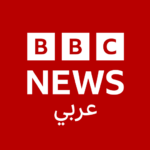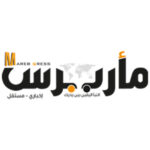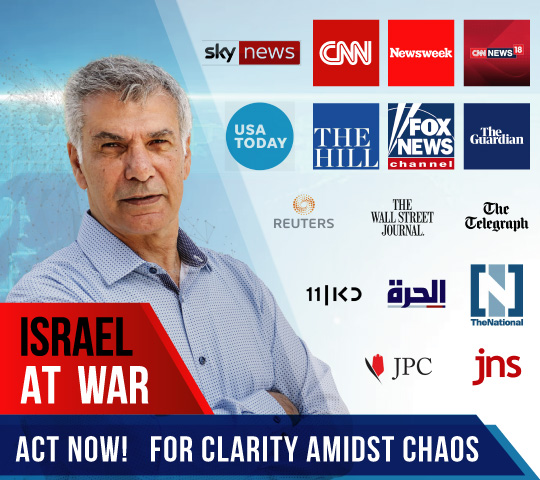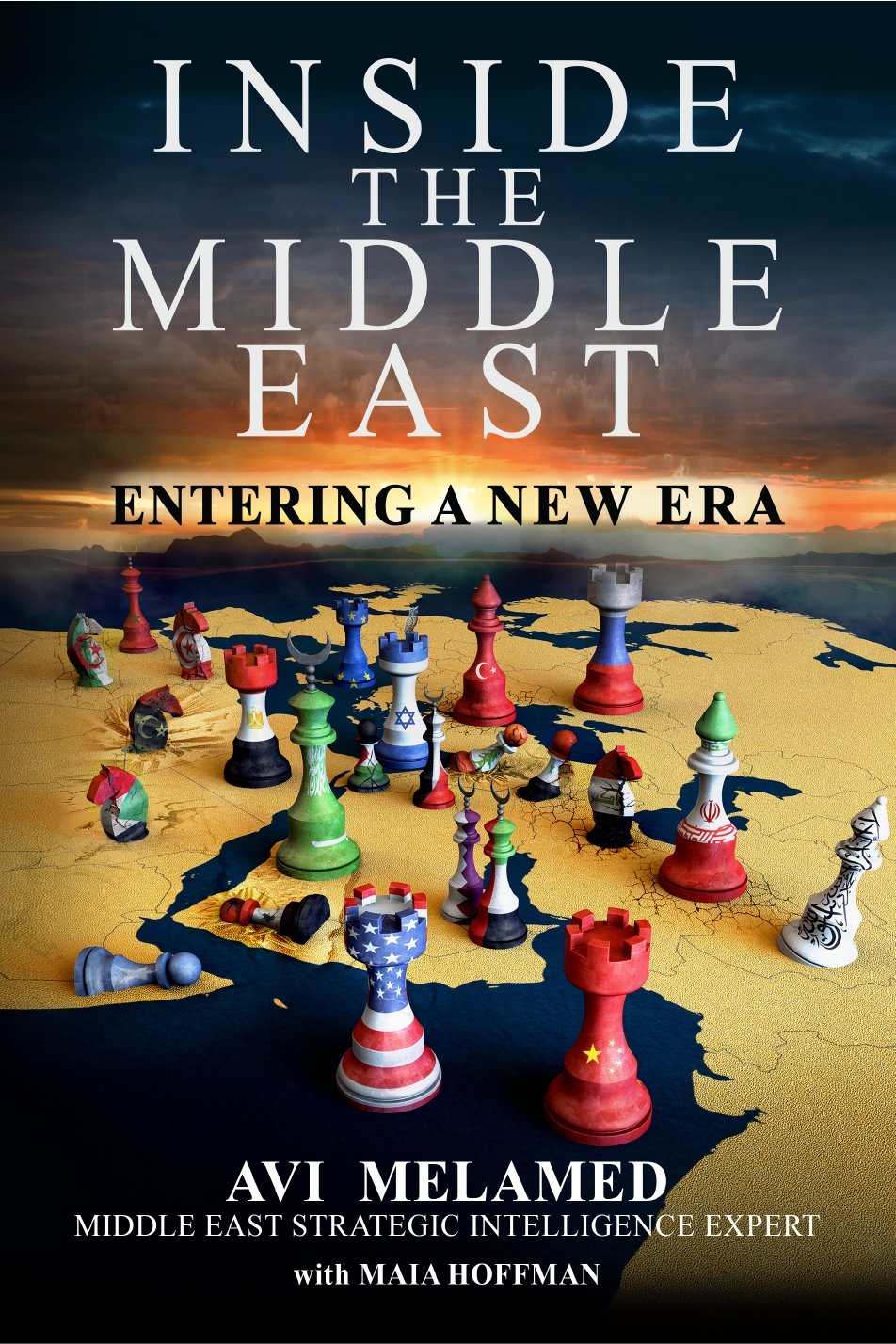|
Getting your Trinity Audio player ready...
|
Vienna, Aden, Damascus
The signing of the Vienna agreement on July 14, 2015 between Iran and the “Five Plus One” states, China, France, Russia, the United Kingdom United States, plus Germany regarding the Iranian nuclear program was not surprising.
The Mullah regime desperately needed an agreement and the United States President, Barrack Obama wanted – critics of the agreement add that he desperately wanted – an agreement.
Some argue it is a bad deal, others argue it is a good deal; some see both positive as well as negative aspects of the agreement.
There should have, and could have, been a much better agreement. The West had a much stronger hand than the Iranians.
Before and after July 14th there has been a flood of opinions regarding the agreement. I would prefer not to focus on the agreement per se, but rather on two aspects related to the agreement:
One, how the Arabs view the agreement.
Two, what are the potential ramifications of the agreement in the specific context of the war in Syria.
The reason I focus on Syria is because Syria is a litmus test which provides us with some understanding of the possible regional ramifications of the Vienna agreement.
How do Arabs view the agreement?
Arab states like Jordan, Kuwait, Saudi Arabia, and the United Arab Emirates formally gave their blessing to the agreement. Yet make no mistake; it is mostly a diplomatic blessing. The statement often used in the Arab formal position regarding this agreement is “We welcome the agreement because agreement is the right way.” Obviously, the next sentence starts out with the word “But” or “However.”
The ”but” and the “however” in the Arab position regarding the Vienna agreement is unequivocal and leaves no room for doubts. The Arabs think that the agreement is bad – very bad.
The Arab’s major concern is not necessarily the Iranian nuclear program. Leading Arab columnists and analysts fear that the hundreds of billions of dollars that will flow to Iran will not solely be used to address its domestic hardships and to alleviate the suffering of its people, but rather the Mullah regime will maximize the lifting of the sanctions and the flow of money to continue and to increase its funding of their proxies in Iraq, Lebanon, Syria, Yemen, and the Gaza Strip.
The Arabs believe that the outcomes of the Vienna agreement will bolster and increase Iran’s aggressive regional policy, which will result in more violence, more bloodshed, and more instability. They portray a very gloomy future for the Middle East following the Vienna agreement.
And there is another interesting – yet not surprising – Arab message.
The Vienna agreement is a milestone of enormous strategic importance. Due to the expected negative ramifications on the Arab world, the discourse in the Arab world is that Arabs should reorganize themselves economically, politically – and above all militarily, to secure their strategic interests in the new reality.
Some argue that the “military” component in the Arab message means that the Arabs will have nuclear weapons. That is definitely an issue, yet not one that is going to materialize – at least not immediately, nor in the near future.
The military ingredient mentioned by many Arab columnists and analysts has another meaning that I will elaborate on later in this article.
Of the many quotes expressing skepticism regarding Iran’s future direction, I want to share the thoughts of Saudi Prince Bandar Bin Sultan, former head of Saudi Intelligence and Senior Advisor on Saudi national security who served as Saudi Arabian Ambassador to the United States.
In an article he wrote on July 15, the day after the agreement was signed, for the online Arabic news portal Elaph, he presented the following question:
“Why was Obama determined to close the deal with Iran, knowing it will stream hundreds of billions of dollars to Iran thus increasing the chaos in the region”?
Bin Sultans answers: “Because President Obama is so sure that he is right and he dismisses the catastrophic outcomes as collateral damage.”
Towards the concluding part of his short article Bin Sultan wrote: “I am more convinced than ever that my dear friend, the old fox Henry Kissinger, was right when he said: “The enemies of the USA should fear her – but her friends should fear her more.” He ends his letter with these closing words: “This is heartbreaking, but the facts cannot be ignored”.
Bin Sultan named his article “Tabq al-Asl Thanyia” – Arabic is an incredible language; and Bin Sultan is particularly masterful in his choice of a title for this article; it can be translated in a positive context ‘being true to yourself, holding on decisively to what you believe in’ but it can also be translated as ‘blind arrogance’ or ‘dogmatism’.
In March 2015, I published an article entitled Pax Amer-Iran in which I described and analyzed the reasons for the level of anger, discontent and disappointment of the Arabs with President Obama’s administration warming relations with Iran. Bin Sultan’s article clearly falls into that category.
It didn’t take long for Iran to respond to the Arab skepticism. And, the response was interesting. Reportedly, Iran’s Supreme Leader, ‘Ali Khamenei announced in a public speech “Iran will keep supporting the people of Yemen, Iraq and Syria, as well as the Mujahiddun (the warriors of holy war) in Palestine and Lebanon.“
One element of that speech particularly drew my attention or, to be more accurate, one thing Khamenei did not say was significant– he did not pledge support to Assad.
And that brings me to address the second issue. What are the ramifications of the Vienna agreement on the most substantial arena in the Middle East today – Syria?
Indeed, the question if Assad stays in power or not is secondary.
The big questions in the context of the war in Syria following Vienna agreement are:
Will Iran boost its aggressive involvement in Syria following the signing of Vienna agreement?
Or will Iran turn inward and focus into its own internal and domestic affairs, thus opening the way for an arrangement that will end the war in Syria?
In case an arrangement is achieved, what will be the features of such an agreement and what will Syria look like?
As of July 2015, I foresee an opportunity for the opening of a path that could lead to an arrangement ending the war in Syria.
My analysis is based on three major developments:
The Vienna agreement.
The weakening of the Iran-Assad axis in Syria.
The Arab states and Turkey intensifying their efforts to block Iran’s’ expansion.
The Vienna agreement: Paradoxically, the Vienna agreement which provides Iran legitimate membership in the club of “nuclear threshold states,” at the same time takes away one of Iran’s most significant cards – its nuclear program. The nuclear program as for itself is not Iran’s ultimate goal – at least not today; the Mullah regime’s ultimate objective is to be a regional superpower and to be recognized as such. In the service of that objective, Iran skillfully uses two tools – the nuclear program and the Axis of Resistance; both elements are intertwined and one secures the other for one goal: to ensure Iran’s regional ambitions.
How?
All throughout the negotiations over Iran’s nuclear program there was one other factor very present, yet not mentioned; and that was Syria. The United States, focused on obtaining an agreement and putting the Iranian nuclear deal behind them, chose not to pressure Iran for its involvement in the war in Syria. Iran, accurately identified and analyzed the United States’ mindset and played the card shrewdly. As the talks lingered, Iran increased its involvement in the war in Syria, hinting that its strategic interest in Syria was a red line, and if crossed – Iran would walk away from the talks.
The Axis of Resistance – led by Iran and comprised of Syria, Hezbollah and other Shi’ite militant factions as well as Palestinian Sunni Islamic militant groups like Hamas and Islamic Jihad in Palestine, is the card used by Iran to expand its influence in the region; deter a possible attack on its nuclear facilities; and ensure that Iran’s ally in Syria – the Assad regime, stays in power. Indeed, Iran often threatens to retaliate if its strategic interests are jeopardized or if its allies are attacked. For example, Iran warns that a United States attack on Syria will result in “fierce actions against U.S. targets and allies.” The executor of those threats are Iran’s proxies like Hezbollah, Hamas or the IJIP – the Islamic Jihad in Palestine (based in the Gaza Strip) as well as terror cells Iran has deployed in the Arab Gulf states. Obviously, that threat is also relevant in the context of a possible military attack on Iran’s nuclear facilities. The Iranian threat to set the Middle East on fire by using its proxies is always looming. For example, Assad threatened that “any threat to his rule will unleash an earthquake that would burn the Middle East.” Assad was the speaker – yet the voice was Iranian.
(For more on the connection between the Iranian nuclear program, the Axis of Resistance, and Syria, please read my February 2012 article Is War in the Middle East Inevitable.)
The Vienna agreement actually cuts the connection between the nuclear program, the Axis of Resistance, and the endurance of the Assad rule in Syria.
Why?
Since Iran has now signed the agreement and has formally pledged not to have a nuclear weapon, it can no longer threaten to walk away from the talks – because they are done.
Furthermore, since Iran’s nuclear program and facilities are now “legalized” by the agreement, the likelihood of an attack against its facilities has been diminished, limiting Iran’s ability to deploy the Axis of Resistance against the United States or Israel or Saudi Arabia under the guise of deterring an attack on its nuclear facilities.
The inevitable question then is – since Iran used the talks as a means to ensure Assad’s rule, then why would Iran sign the agreement knowing that it might compromise their ability to continue to ensure that he stays in power?
The answer is there was a deadline for a cessation of the discussions. Iran reached the point in which it couldn’t drag out the negotiations any longer. The Iranians knew that even President Obama would not be able to conduct the talks endlessly. The Mullah regime knew their time was up; they simply had to make a decision.
Thus, one can argue that in a way, the signing of the Vienna agreement narrows Iran’s maneuverability.
One indicator of the accuracy of that analysis is the fact that the ultra-conservative factors within the Mullah regime did not welcome the agreement as warmly as one might have expected. They are very uncomfortable with the agreement.
Another possible indicator occurred a few days after the signing of the Vienna agreement. The United States Department of the Treasury announced sanctions against three senior Hezbollah militants for their role in Hezbollah’s military involvement in Syria, as well as one Lebanese businessman also tied to the organization. One of the people included on the list is a senior Hezbollah member, formally wanted for questioning by the Special Tribunal for Lebanon (STL) investigating the murder of former Lebanese Prime Minister Rafiq Al-Hariri in February 2005.
The United States Department of the Treasury’s announcement is very interesting given the fact that up until now Hezbollah has totally dismissed the STL demands and the United States has not been pressing the issue. And furthermore, the Worldwide Threats Assessment of the US Intelligence Community that James R. Clapper, the United States Director of National Intelligence, presented to the Senate Armed Services Committee on February 26, 2015, did not mention the threat of Shiite terrorism, including the challenges of terrorism from Iran and Hezbollah.
Through the Department of Treasury’s actions, is the United States sending a signal to Iran that with the signing of the Vienna agreement, the regime must cease its aggressive policies in the region? Are we about to see a much more proactive U.S. policy towards the Syrian crisis? If so, what are the possible manifestations and ramifications of such a policy? It is possible that we will have answers in the not too distant future.
The weakening of the Iran-Assad axis in Syria: Iran’s involvement in the war in Syria is based upon two major components: the supply of weapons, ammunition and funds to the Assad regime and the deployment of Hezbollah – and to lesser extent also Afghan, Iraqi, and Pakistani Shiite militias – in the war.
These two factors have an Achilles heel – they can be effective up to a certain point.
Both Assad’s forces, as well as Hezbollah, are already being pushed to the brink and their capacities are being stretched to the limit.
Over the past few months, Assad and Hezbollah have sustained significant military defeats. Hezbollah, the major Lebanese Iranian proxy, and to large extent Assad’s military backbone, is sinking in the Syrian mud. The growing number of Hezbollah militants killed – the majority of whom are Lebanese Shiite – is generating growing discontent and anger among the Shiites in Lebanon, the political stronghold of Hezbollah.
At the current pace and scale of loses which Assad and Hezbollah are sustaining, Iran will have to send massive Iranian forces to fight in Syria to secure Assad. That’s unrealistic and it’s not going to happen.
As time goes by, and Iran’s proxies in Syria are increasingly eroding, the use of military force to ensure Iran’s interests in Syria is becoming less and less effective.
Therefore, Iran must look for another way to ensure its interests in Syria and Lebanon.
The Arab states and Turkey intensifying their efforts to block Iran’s’ expansion: The Arab states and Turkey are gaining momentum in their efforts to block Iran. It seems as if the Arab military coalition fighting against the Iranian backed Houthi militia in Yemen is a fruitful operation.
Unfortunately for Iran, in the days following the signing of the Vienna agreement, the Arab military coalition gained a significant achievement and retook the strategic port city of Aden in Yemen.
Under the growing pressure of the Arab military coalition in Yemen, it is likely that the Houthis will turn to diplomatic channels to end the violence. In fact, following the defeat of the Houthis in Aden, the former Yemenite president, and current Houthi ally, ‘Ali Abdullah Saleh, called for an immediate end to the war in Yemen. That would be a clear Saudi triumph in its efforts to block Iran’s influence in Yemen.
The Arab coalition’s achievements in Yemen provide the Arab states with a momentum, tactically as well as emotionally, which may be very relevant in the context of Syria. Arab analysts indicate that the advanced military capabilities of the Arab Gulf states demonstrated in Yemen – such as a modern and advanced air force, high precision weapons, etc. can be easily applied in Syria as well, since Iran and Assad don’t have the military capacities to counter the Arab Gulf states military advantage.
In their efforts to block Iran’s expansion, the Arab world and Turkey can invest huge resources and funds, whereas, the Mullah regime will have to allocate most of its resources and funds to deal with the huge economic and social challenges accompanied by growing discontent and unrest inside Iran. One should consider how long Iran will be able to allocate the funds and resources necessary to confront the combined Arab-Turkish resources and capabilities.
Disturbed with the Vienna agreement, the Arab states and Turkey, are intensifying their efforts to block Iran’s’ expansion – and they are not wasting any time.
The Saudis made an immediate move. On July 15th, before the ink on the agreement had even dried, a delegation of Hamas senior leaders, including the Chairman of its Political Bureau and top-ranking Hamas’ leader, Khaled Masha’al, met the Saudi king during a visit to Saudi Arabia, celebrating Muslim holyday of ‘Eid al-Fitr. This meeting was significant, bearing in mind that in March 2014 Saudi Arabia formally classified the Muslim Brotherhood movement – the mother movement of Hamas – as a terrorist organization and, for the last decade Saudi Arabia has given Hamas the cold shoulder.
The Saudi initiative stemmed from the Saudi’s estimation that following the Vienna agreement, Iran will resume its massive support for Hamas. We need to remember, that as the war in Syria evolved, Hamas – a Sunni organization – loosened its hug with Iran and Assad because of their slaughtering of Sunnis in the war; Iran retaliated to Hamas’ treason by dramatically cutting its support to Hamas. Over the past few months, in spite of Hamas’ signals and direct requests, Iran refused to forgive Hamas that easily. Why would Iran resume its support now? Because by strengthening its ability to reignite the Gaza-Israel border again, Iran compensates for its diminished maneuvering capacity in Syria. The Saudis do not want to enable Iran to counteract its diminishing capacity.
Thus, Saudi Arabia offers Hamas a package-deal. Hamas will keep the Gaza Strip calm and will not enable Iran to reignite the Gaza-Israeli border. In return, Saudi Arabia will sign the paychecks and pay the bills and will ask Egypt to ease its pressure on Hamas. Again, we need to remember that the current Egyptian government, under President, Abdel Fattah el-Sisi, oppresses the Muslim Brotherhood in Egypt and puts pressure on Hamas by destroying Hamas’ oxygen pipe – the tunnel industry which connects the Sinai Peninsula to the Gaza Strip. This constant Egyptian pressure is taking a heavy toll on Hamas; the Gaza Strip is a pressure cooker and ISIS-affiliated factors there are smelling Hamas’ weakness, evident by the fact that they dare to challenge – more and more brazenly – Hamas’ rule. Hamas really needs the pressure alleviated – ASAP.
The Saudi move has another important objective; it sends a friendly signal to Turkey and Qatar, who support the Muslim Brotherhood and its offspring Hamas. That way, the Saudis clear the air with Turkey, in the service of their common interest – to prevent an Iranian takeover of Syria.
As for Turkey, they are signaling that they are coming closer to taking a much more proactive policy regarding the situation in northern Syria. Reportedly, over the past few weeks Turkey has deployed military reinforcements along its border with Syria.
What concerns Turkey is the possibility of the establishment of a Kurdish autonomy in northern Syria that will be affiliated with The Kurdish Workers Party (PKK), Turkey’s bitter rival who calls for the establishment of an independent Kurdish state within Turkey’s borders.
Turkey could use the Kurdish issue as a card to justify military action in northern Syria for example, imposing a no-fly zone on Assad’s air force – or what’s left of it – in the proximity of the Turkish-Syria border.
For the above reasons, as of July 2015, for the first time since the outbreak of the war in Syria, a potential path has opened that could lead to an arrangement that will end the war.
Yet, the road towards an arrangement there will be long and winding. Until that time, Syria will continue bleeding and many more people will pay the price.
What may be the features of a possible settlement that will end the war in Syria? How will such arrangements affect reality in the Middle East? What will the ramifications be on Israel? I explore these questions and much more in my new book and my upcoming North American book tour beginning in the fall of 2015 entitled “Inside the Middle East – Making Sense of the Most Dangerous and Complicated Place on Earth”– a GPS to help you navigate the dramatically changing Middle East.
The Vienna agreement represents the legacy of the United States President Barack Obama in the Middle East. However, only history will judge President Obama’s Middle East legacy.
Allow me to share with you two symbolic aspects of the Vienna agreement.
One is the date. The agreement was signed on July 14th, a date of significant importance in western history. On July 14, 1798 the fortress of Bastille Saint-Antoine in Paris known as The Bastille, was stormed by a mob of armed men. That event became a symbol of the fight against tyranny.
The other is the location. In the summer of 1683, as the Ottoman Empire was expanding its power and rule throughout Europe the Islamic army ruthlessly made its way towards Vienna. After two months of attacks on the city, the King of Poland, led an army of tens of thousands of German and Austrian soldiers and broke the Ottoman siege of Vienna. This event was a turning point in the Polish-Ottoman war and in the history of the Ottoman Empire. In 1699, the sides signed the Treaty of Karlowitz. That agreement, ending over sixteen years of war between the Ottoman Empire and Hungary, Poland, Venice and Russia marked the end of Ottoman control in much of Central Europe and the beginning of the empire’s decline.
Closing Notes:
I want to conclude by being very clear by reiterating what I said in the beginning of this article. I chose to focus on two very specific topics – how the Arabs view the agreement and what are the potential ramifications of the agreement in the context of the war in Syria.
I am not evaluating whether or not the Vienna agreement is a good or a bad deal. Nor am I rating the United States administration. That is not the intention of the article.
As i said, there should have, and could have, been a much better agreement. The West had a much stronger hand than the Iranians.
I am also not suggesting that because of the Vienna agreement a potential path for an arrangement that will end the war in Syria in now open. Rather, I believe that the conjunction of the Vienna agreement together with other developments in the region which mention in this article, and in previous articles I have published on the region, provides an opportunity for the beginning of a process that could lead to an arrangement that will end the war in Syria. No less important, a more proactive United States policy towards the war in Syria – which we might be seeing embers of – is essential for the realization of that opportunity.
And finally, in this article I am by no means commenting, examining or analyzing neither the ramifications of the Vienna agreement on Israel’s geostrategic environment, nor the possible developments in Syria on Israel’s geostrategic environment. Analysis on that matter requires a wide perspective, much more background information, and insights and observations that zoom in on the micro and zoom out on the macro to create a three dimensional picture of the Middle East in the second decade of the twenty-first century.
That is what I am doing in my new book and my upcoming North American book tour beginning in the fall of 2015 entitled “Inside the Middle East – Making Sense of the Most Dangerous and Complicated Place on Earth”– a GPS to help you navigate the dramatically changing Middle East.
If you want to have a better understanding of the news and what really drives the unfolding events…
Read the latest book of Avi Melamed,
INSIDE THE MIDDLE EAST | ENTERING A NEW ERA, available now >>>
Follow me on Twitter @AviMelamed; Facebook @InsideTheMiddleEast; for more Videos on YouTube https://www.youtube.com/c/AviMelamed
I can always be reached at Av*@Av********.com































































